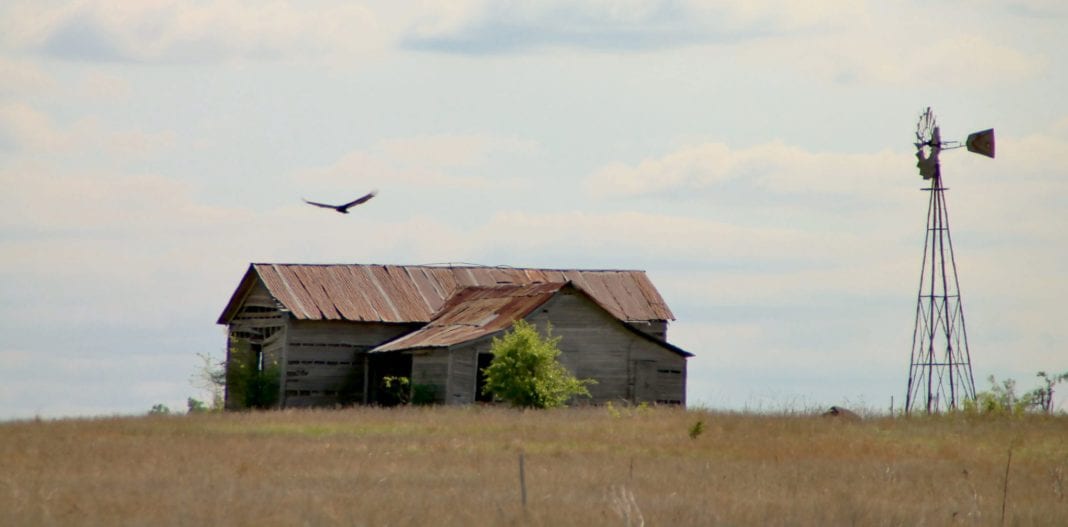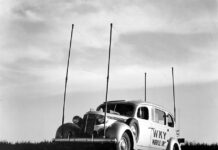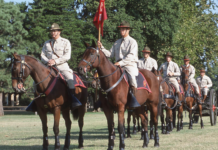The home of attorneys Aimeé and Robert Treece sits upon an original 160-acre Canadian County homestead that was owned by Robert’s ancestors. It now houses a popular event venue, the McGranahan Barn – a building with a fascinating history.
During the Plains Indian Wars, Robert’s great-great-grandfather, 22-year-old James McGranahan, drove a mule-drawn wagon into Indian Territory under the commands of decorated Civil War Yankee Maj. Gen. Philip H. Sheridan, commander of the Department of the Missouri, and Yankee Lt. Col. George Armstrong Custer.
As a member of a Kansas volunteer regiment, McGranahan arrived just after the November 27, 1868, Battle of the Washita. Later maintaining stage stations, McGranahan was an employee of government contractors under permits from the War and Indian Departments. McGranahan married Sarah, from Caldwell, Kansas, in 1883, and they operated a stage and mail station near Hennessey. From 1888 until the 1889 Land Run, James served as a postmaster of Oklahoma Station, now Oklahoma City.
Together, the McGranahans operated Oklahoma Station’s first hotel. Later, they bought a 160-acre homestead where Highways 3 and 4 converge in Canadian County. A stage stop was near their land, running from Oklahoma Station to Fort Reno. The home they built in 1895 still marks the southwest corner where Piedmont Road and Northwest Expressway converge.
Known as social butterflies, the McGranahans built a barn on their land, where they hosted dances with fiddle players and musicians. They had four children and resided in their home until 93-year-old James died in 1939, and 78-year-old Sarah died in 1940.
Their property has remained in the family for six generations, but the original barn collapsed in the 1990s. Robert, born in Okarche and raised in Piedmont, built an exact replica of the barn on the original site. The Treece family then revealed the McGranahan Barn, a popular wedding and event venue, at 12310 Northwest Expressway in Yukon.
Listed on the State and National Register of Historic Places, the McGranahan Homestead is a documented crossing of the Chisholm Trail. There are also preserved buffalo wallows on the land. Buffalo herds, which often moved along the same traces or paths, created the wallows as a place to roll in the dirt to eradicate flies and bugs. At least 17 wallows are on the property, each about 10 to 15 feet in diameter; it’s bad luck to mess with the wallows, as Native Americans consider them sacred ground.
Travelers likely zoom past the location and never glance at the aging ghost of a home that has stood for 125 years. But if you listen, the prairie winds have stories to tell.


























